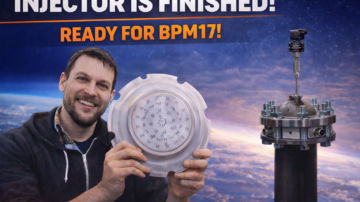First steps in Spica development are home produced stainless steel fuel tanks on our custom welding lathe. Followed by their attempted destruction by pressurization
Blog
BPM-17 Injector is complete!
The injector for BPM-17 is now complete. BPM-17 is a test engine built to prepare our test stand for the next generation of Spica’s large rocket engines. While the injector itself is a highly technical Read more…





2 Comments
Micah · 14th February 2018 at 9:00 pm
Very cool. I wanted to ask/suggest 2 things: would it be possible to roll a lip into the cylinder where the cap meets, so that during the extension the weld isn’t trying to bend? Basically making the weld seam oriented in the post expansion position. Second, because you are welding in only the one direction, it would be easy to extend the gas shield nozzle so that you have trailing gas coverage. This may help make the weld less brittle. One last thing on gas, if you aren’t already, you could try using paste on the inside seam of the weld to get proper coverage there too. Love your project and I’m excited to see more!
Jacob Larsen · 15th February 2018 at 12:20 am
Hi Micah. I’m glad you like our little experiments.
You could roll a lip, which would make the joining edges much stronger. The heavy machinery required to do this kind of operation is however way out of our league.
We could certainly try to extend the gas nozzle (or add a secondary one) to provide some trailing edge gas. This wouldn’t solve the problem though, since the root cause was too little welding power. More power and deeper weld penetration is the key to getting this right.
Cheers!
Comments are closed.